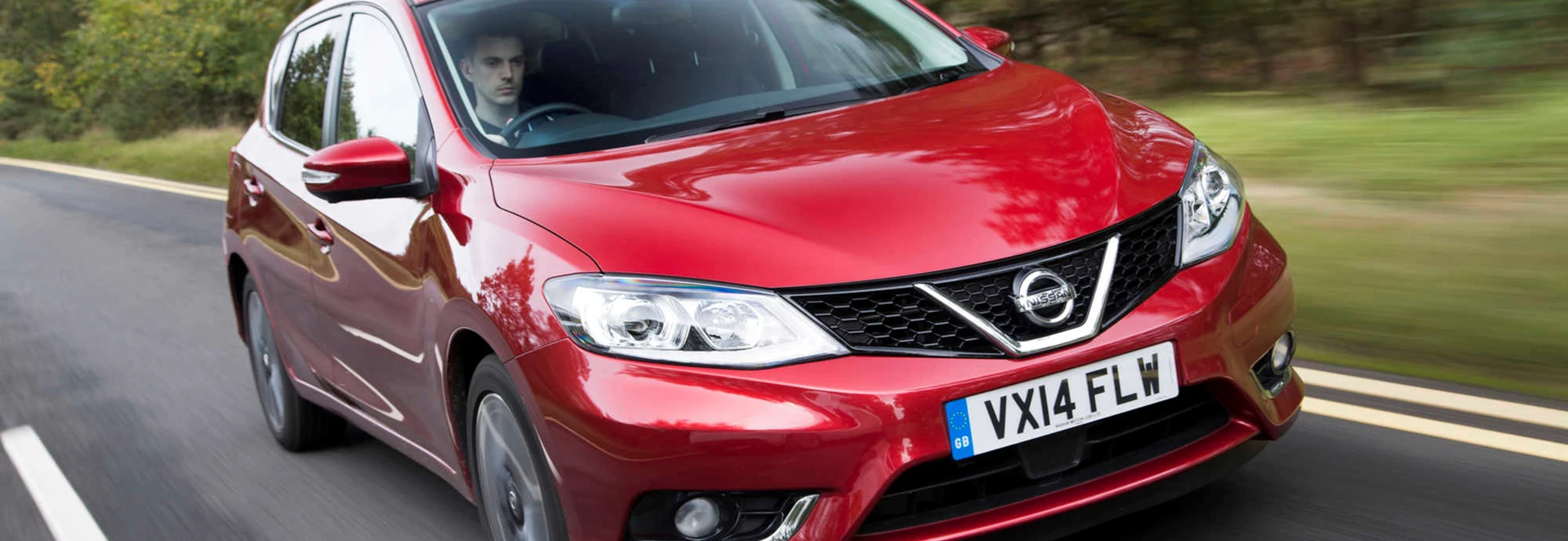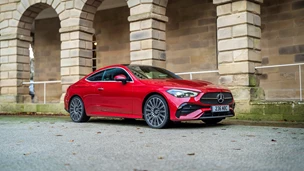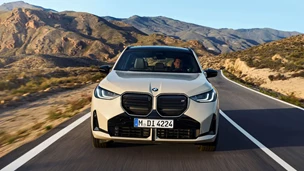Nissan has made a name for itself in recent years for its popular crossovers, the Qashqai and Juke. The former, while not a direct rival for the family hatchbacks of today, has become a serious thought for those considering buying a Volkswagen Golf.
Now, however, Nissan is bravely launching a family hatchback of its own, the Pulsar. That makes it a real competitor to the VW Golf, Ford Focus and so on, and is highly likely to compete with its own Qashqai too.
Still, Nissan told us that the Qashqai is priced against the Golf, while it considers that the Pulsar, at 10 per cent cheaper, is up against the Toyota Auris and Hyundai i30. The Qashqai will remain the bigger seller of the two.
When the standard is so high in the hatchback market, it’ll certainly be difficult to make a good impression, but Nissan claims the Pulsar has class-leading space, alongside a host of new technology.
Performance
For now, there are just two engines in the line-up: a 1.2-litre DIG-T petrol unit delivering 113bhp and a 1.5-litre dCi diesel with 109bhp. Early next year, a 1.6-litre turbocharged petrol with an output of 187bhp will be added to the range, broadening its appeal.
In the meantime, the current engines promise to cater well to the marketplace, with decent performance balanced with good running costs, an all-important factor when you consider that fleets will make up 60 per cent of sales.
Still, while businesses will opt for the 1.5-litre diesel, it is the 1.2-litre petrol that is expected to have the most volume. Managing 0-62mph in 10.7 seconds, and with 190Nm of pulling power, it’s an able engine, so long as you don’t push it.
The first and second gears don’t welcome anything but a slow exit from traffic lights, while at higher speed, you’ll find a heavy foot is needed to get the Pulsar moving. Coming out the other side of some tight corners, we needed to put our foot to the floor, and even then, it takes a while.
We don’t expect high velocity from a 1.2-litre petrol, but a little more power mid-range would make the world of difference.
Ride and Handling
It doesn’t excel at being a driver’s car, but it does manage to offer relative comfort, while also curtailing the majority of body roll and providing decent grip when needed.
The Pulsar falls under the category of ‘fine’ for ride and handling. It doesn’t excel at being a driver’s car, but it does manage to offer relative comfort, while also curtailing the majority of body roll and providing decent grip when needed. There is an underlying sense that it can’t quite be trusted on tight bends, but Nissan has introduced micro-braking when cornering, which should help to avoid understeer and aid confidence. On some rather smooth, non-UK-like test routes, the ride was good, but it also seemed to jump a little over some motorway bumps, while there was a little wind and road noise at high speeds. On the other hand, the petrol engine idles away pretty quietly.
Interior and Equipment
Nissan has previously sold the Pulsar model in the UK, with the most recent example, renamed the Nissan Almera, ending production in 2006.
The Pulsar cabin is a bit hit and miss. There are still plenty of cheap plastics mixed in with more expensive ones, but it’s not the most convincing set-up. The design isn’t a million miles away from the Qashqai or Juke, but the central console does, overall, appear more modern. The Pulsar’s long wheelbase – 2,700mm (versus a Focus’ 2,648mm) – means great legroom in the back - 692mm of knee room to be precise, a class-best. There’s also plenty of head room too, so it’s very viable for carting four adults around. Boot space is good too at 385 litres, just beating the Golf, with a wide loading aperture that makes access to shopping or suitcases rather easy. Put the rear seats down and this expands to 1,395 litres. The Around View Camera, which lets you have a 360-degree view of the car from above when parking, is certainly a tech highlight – especially when it is self-cleaning.
Cost
The diesel has the best CO2 emissions at 94g/km, with claimed fuel economy of 78.5mpg, while the 1.2-litre petrol emits 117g/km and returns up to 56.5mpg.
Nissan’s new Pulsar is priced from £15,995, rising to £21,945 for the top-spec diesel, which makes it cheaper than the Golf which starts at £16,975, but more expensive than the i30 from £14,605. The diesel has the best CO2 emissions at 94g/km, with claimed fuel economy of 78.5mpg, while the 1.2-litre petrol emits 117g/km and returns up to 56.5mpg. This is good enough to compete with the big guns, as the diesel currently falls into the road tax-free bracket. The Focus has an Econetic engine that achieves 88g/km while the i30 has a Blue Drive iteration that emits 97g/km, but both of these cars are around a second slower than the Pulsar. Leasing costs are competitive with rivals, while the model is suitable for both private buyers and businesses alike. The petrol-powered Pulsar has a low residual value of 20 per cent which is slightly concerning, but high levels of kit throughout the range should help residuals.
Our Verdict
The family hatchback market is an incredibly hard one to crack. The Pulsar certainly doesn’t have the interior or driving standard of the Golf or Focus, but when you hold it against what the carmaker claims to be its rivals, the i30 or Auris, it is a very capable model. One of its biggest struggles will be raising awareness, but many people will welcome a new alternative to this somewhat stale segment. It does impress on the tech front though, with the inclusion of the likes of the self-cleaning Around View Camera a statement of intent from Nissan. With low CO2 and high fuel economy, along with a host of space inside, the Nissan Pulsar is a good choice for both city driving and long motorway journeys.




